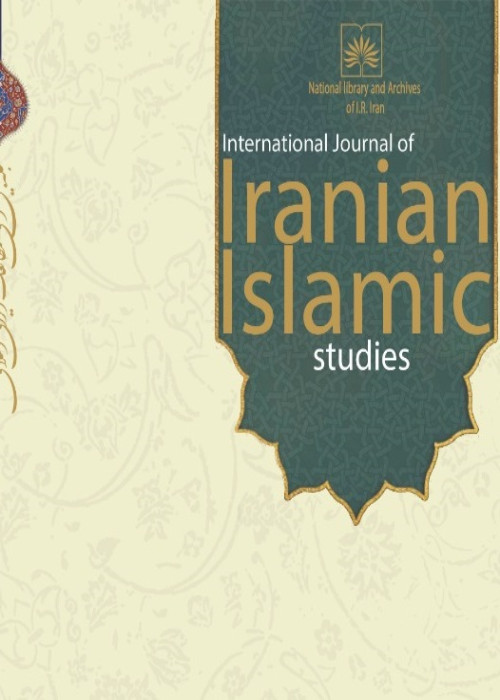The evolution of textiles in the Pahlavi period with emphasis on the role of Yazd
Yazd is several thousand years old in textiles, in the Safavid period of the Golden Age and the greatest textile designer in the history of Iran, namely Ghias-ud-Din Naqshband Yazdi. Dozens of fabrics, some of which were unique, were produced in Yazd. The same growth more or less continued during the Pahlavi era, and the establishment of textile industries was introduced as part of industrial development policy. The weakness of private sector investment and the lack of capital security, which were inherited from this past to this dynasty, paved the way for the entry of the first Pahlavi in the industrial investments of this era. Due to high borrowing, World War II, economic recession, etc., fluctuations occurred and as a result of the First World War, the population of Yazd markets and Timcheh became empty and the industry of Sabbaghi, traditional textile weaving, sock weaving, zillow weaving, etc.was disrupted and their owners were forced to trade more. Foreigners were drawn. In continuation of this process, the next generation of Yazdi merchants were formed and dozens of textile factories, etc. were established in Yazd. The great impact of the Silk Road on Iranian trade and the location of sedition in many Iranian cities, including Yazd, led to the growth of various industries, including textiles and textiles in Iran, including Yazd. Yazd was considered, but now the second volume of industrial investment in Yazd province with employment of 25,000 people, is related to textiles. Yazd ranks second in the production of cotton fabrics and synthetic fibers, second in the production of machine-made carpets, second in the production of Fastoni fabrics and first in the production of rumble fabrics. Yazd ranks first in the field of weaving and second in the field of spinning in the whole country. The plant was purchased from Germany. In Iran, the textile industry grew by machine in the early 14th century. Yazd's first industrial factory was not easily established. Yazdi came and with the help of the National Bank of the company in March 1305, with an initial capital of 250 thousand tomans, established a textile factory. By following and reviewing the plans of the first Pahlavi II along with the modernization and upgrading of textile machinery, the Iranian textile industry achieved self-sufficiency in the 1950s. In the Pahlavi period, the main focus was only on the trade in weaving or Yazdi silk handkerchiefs or making Yazdi bath bags or making cheap Yazdi zillows for most of Iran's mosques. Yazd textile played a significant role in the self-sufficiency of Iran's textile industry in the 1940s. Had. Pahlavi considered Yazd as its origin as one of the poles of Iran's textile industry In addition to the strengths, the establishment of these industries in Yazd faced weaknesses such as lack of specialized manpower and the texture of the agricultural economy in Yazd, prevented the emergence of industrial working class in this area of Iran, so the textile industry in Yazd is facing a shortage of specialized manpower It turned out. To solve this challenge, the first Pahlavi forced the transfer of workers from central Iran to Yazd, a policy that failed. The passage of the law banning the hijab and the uniformization of clothes dealt a severe blow to the silk weaving industry and art. The ban on the import of silk during the second Pahlavi period created many opportunities for huge profits. He came to Yazd. Over time, Yazdi weavers gained special skills not only in artistic weaving but also in designing and manufacturing machines, tools and textile designs. He found that, of course, Kafaf did not produce a high amount of textiles in Yazd; Therefore, a part of the required silk was imported from the cities around Yazd. And the industry became Yazdi weavers. In Meybod, weaving with a history of about 600 years (or even more) is still lived and woven in the hands of powerful old women in some old neighborhoods. In the desert region of Meybod, with the hot and dry climate, it is necessary for human beings to use suitable fibers for their clothing. Yazd is one of the most famous cashmere weaving centers in Iran, whose weaves are world famous. Following this method of historical research (descriptive-analytical) and citing historical findings and sources, this study deals with the evolution of textiles in the Pahlavi period with emphasis on the role of Yazd in the Pahlavi period.
Yazd textile , fabric , Ghias , velvet , Pahlavi
- حق عضویت دریافتی صرف حمایت از نشریات عضو و نگهداری، تکمیل و توسعه مگیران میشود.
- پرداخت حق اشتراک و دانلود مقالات اجازه بازنشر آن در سایر رسانههای چاپی و دیجیتال را به کاربر نمیدهد.


